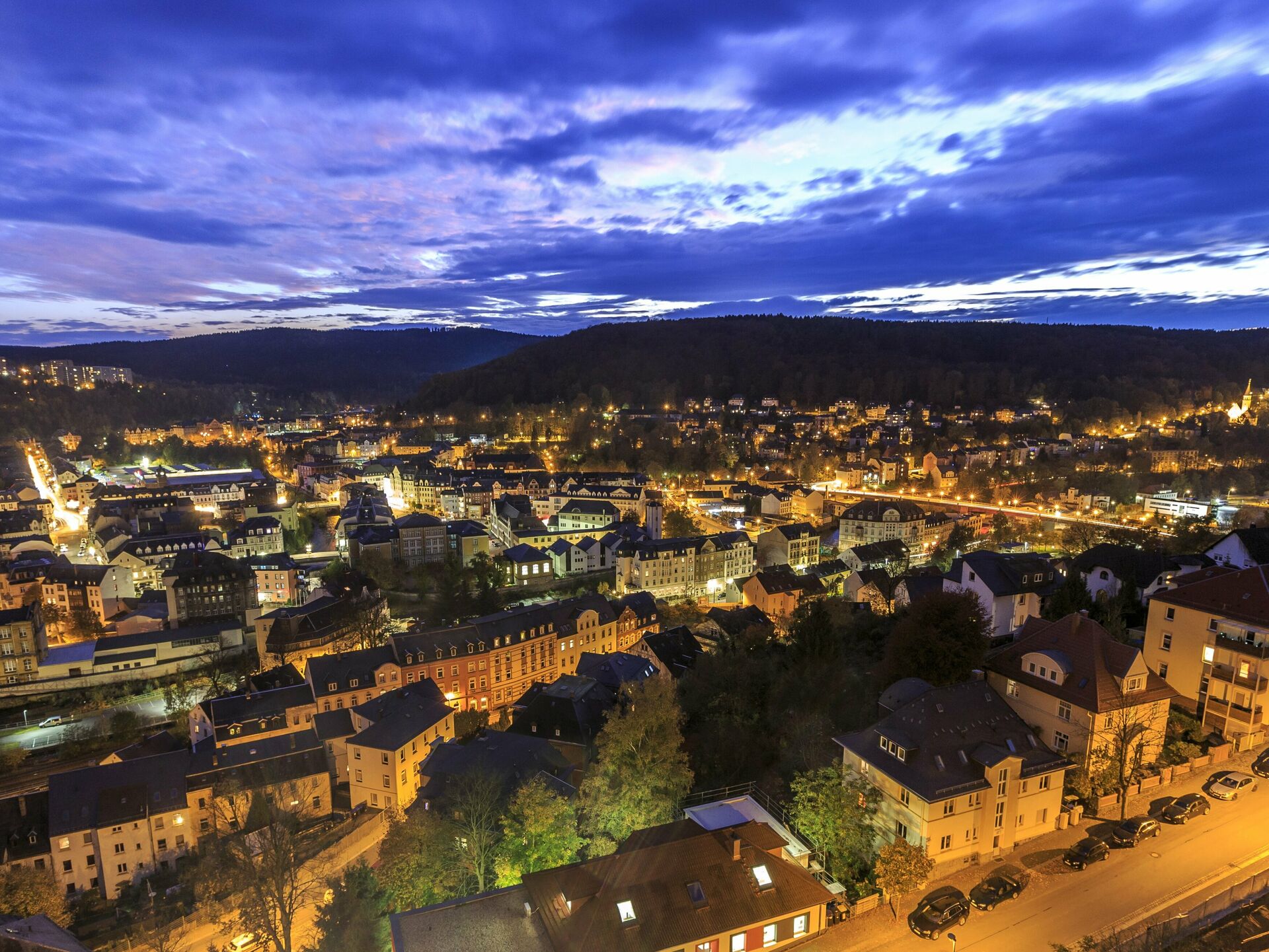Aue-Bad Schlema
First documented as founded by Frederick Barbarossa in the year 1173, Aue is among the oldest settlements in Saxony. Aue is situated amidst wooded ridges at the confluence of the Mulde and Schwarzwasser Rivers, in a steep valley whose slopes rise between 330 and 564 metres.
Aue as a business location. Around 1900, the city rapidly evolved into a major industrial city. Aue remains the site of important industrial enterprises today, predominantly small to mid-sized industries.
Aue as a tourist destination. The city of Aue offers much to the sightseer. In the inner city, you can admire the beautiful façades of the old town houses that date from the earliest period of the city’s life. Among the most remarkable structures is the 13th century abbey church in the Zelle district. From the founding of this cloister emerged today’s Aue – the bridge and sports city of the Erzgebirge. Interested visitors can view the “original house” of Aue, the Zelle cloister, and music lovers can additionally enjoy regular small concerts presented at this site. Aue is located at the confluence of the Mulde and Schwarzwasser Rivers, and is known for its bridges, which are also displayed on its Coat of Arms. From an architectonic perspective, the most interesting structure is the Bahnhofsbrücke, which was the first pre-stressed concrete span with suspended plate girders in the world, and was a world-class technological monument right up to the time of its reconstruction.
Since 01.01.2019 the name of the town is Aue-Bad Schlema.
The city was known for producing raw materials needed for the manufacture of porcelain. Until 1854, thus for a period of about 150 years, the Auer mine, whose colliery has been preserved, was the source for “St. Andreas white kaolin,” was the sole source of this raw material for making world-famous Meißner porcelain. From 1635 on, the Auer Blue Pigment Factory (known today as the Nickel Mill), the first large dye factory in Saxony, produced cobalt blue dyes from cobalt. This dye achieves its luminous intensity through firing, and was treasured as a dye for both Meißner porcelain and Delft glazed tiles. For 100 years, the factory had a monopoly on the manufacture of this pigment.
Not to be underestimated are the name recognition and the prestige accorded to the major district town of Aue. Its reputation has been earned not only by success in sports, but also through the economic success of its numerous productive, labour-intensive industrial, service and business enterprises. The intensive sports and business services provided by the major district town constitute a decisive factor for the economic development of the region.

